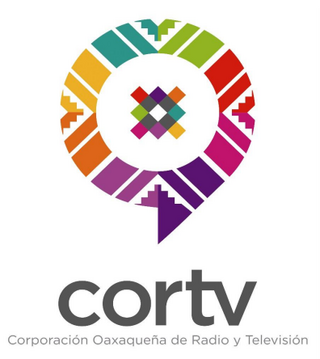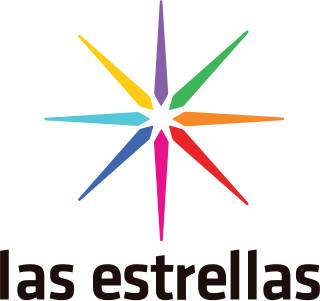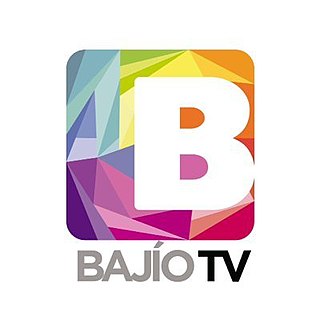Related Research Articles

XHDF-TDT, virtual channel 1, is the flagship station of the Azteca Uno television network in Mexico City, Mexico. Azteca Uno can be seen in most major cities in Mexico through TV Azteca's owned-and-operated transmitter network. XHDF provides HD programming to other transmitters and cable and satellite viewers.

XHIMT-TDT is the flagship station and namesake of Mexico's Azteca 7 network, located in Mexico City.

Canal 6 is a network of Spanish language television stations primarily concentrated in northeastern Mexico and the southwestern United States. The system is part of Grupo Multimedios. The flagship station of Multimedios is XHAW-TDT located in Monterrey, Nuevo León. Programming features locally produced news, sports, children's shows and general mass appeal variety programming. On weekdays, the network produces around twenty hours of live daily programming, with lesser amounts during the weekends and holidays.

XHWX-TDT is a television station in Monterrey, Nuevo León and Saltillo, Coahuila. Broadcasting on digital channel 19 in both cities, XHWX is a transmitter of the Azteca Uno network and the key station in the TV Azteca Noreste regional system, which provides regional news and sports content to Azteca's stations throughout northeastern Mexico.

XEIMT-TDT, known as Canal 22, is a television station located in Mexico City. Broadcasting on channel 22, XEIMT is owned by Televisión Metropolitana, S.A. de C.V., and operated by the Secretariat of Culture. It is one of Mexico's principal public television stations, with a format emphasizing cultural programming.
Canal 28 is an educational and public television station owned and operated by the government of the Mexican state of Nuevo León. It is part of Radio y Televisión de Nuevo León and broadcasts on 24 transmitters serving the entire state.
Radio y Televisión de Guerrero is a statewide public television network and series of radio stations, owned and operated by the agency of the same name in the State of Guerrero.

The Corporación Oaxaqueña de Radio y Televisión is a government agency of the Mexican state of Oaxaca charged with the operation of radio and television stations in the state.
TVMás is the state-owned public broadcaster serving the Mexican state of Veracruz. It and Radiomás, a statewide radio network, are operated by the public agency Radiotelevisión de Veracruz, which is based in the state capital of Xalapa.
The Sistema Michoacano de Radio y Televisión is the public broadcaster of the Mexican state of Michoacán. It includes statewide FM and TV networks, as well as an AM radio station in the state capital of Morelia. SMRTV's programming primarily consists of scientific, cultural and educational content, along with news and sports coverage.

Las Estrellas is one of the cornerstone networks of TelevisaUnivision, with affiliate stations all over Mexico, flagshipped at XEW-TDT in Mexico City. Many of the programs of Las Estrellas are seen in the United States on Univision, UniMás, and Galavisión.
Nueve is a Mexican free-to-air television network owned by TelevisaUnivision. The primary station and network namesake is Channel 9 of Mexico City, though the network has nationwide coverage on Televisa stations and some affiliates. Nueve offers a range of general entertainment programs.

Foro, is a broadcast news television channel owned by TelevisaUnivision. It is seen on most Mexican cable systems and full-time on two stations in Mexico, including XHTV-TDT in Mexico City, with selected programs airing on Televisa Regional and Televisa local stations. Foro is available on most Mexican cable and fiber-optic systems and the SKY Mexico satellite service, as well as on several national cable systems in the United States.

Canal 10 Chiapas is the state television network of the state of Chiapas, operated by the Sistema Chiapaneco de Radio, Televisión y Cinematografía. It currently is broadcast on four primary transmitters in the state, though it had as many as 10 main transmitters in the analog era, when Canal 10 Chiapas reached 77.36% of the state's population.

Canal 5 is a Mexican free-to-air television network owned by TelevisaUnivision. It traces its origins to the foundation of Channel 5 in Mexico City in 1952. Canal 5's program lineup is generally targeted at a younger audience and includes cartoons, foreign series and movies, along with a limited number of sporting events such as NFL games, boxing, the FIFA World Cup and, historically, the Olympic Games.

Canal 44 is the television network of the Universidad de Guadalajara (UDG), a university in Jalisco, Mexico. The primary station, XHCPCT-TDT, broadcasts to the Guadalajara metropolitan area from a transmitter located on Cerro del Cuatro in Tlaquepaque, with additional transmitters in Ciudad Guzmán, Lagos de Moreno, and Puerto Vallarta. Canal 44 and the UDG's eight-station radio network form the Sistema Universitario de Radio y Televisión.

XHL-TDT is a television station in León, Guanajuato, Mexico on virtual channel 12. The station is part of the Televisa Regional division of Televisa and is known as Televisa del Bajío, airing local content and programming for viewers in León and Guanajuato.

Imagen Televisión is a national broadcast television network in Mexico, owned by Grupo Imagen. It launched on October 17, 2016, at 8 p.m.
Canal 13 is a regional broadcasting network operating in parts of Mexico, a division of Albavisión. Its largest subsidiary, Telsusa Televisión México, S.A. de C.V., holds the concessions for 12 TV stations, primarily in southeastern Mexico, obtained in the IFT-6 television station auction of 2017. The Canal 13 network also includes full-fledged TV stations in Villahermosa, San Cristóbal de las Casas—Tuxtla Gutiérrez and Tapachula, as well as their repeaters, and an additional station in Michoacán. All Canal 13 stations are assigned virtual channel 13.
References
- ↑ "TV4 - Gobierno del Estado de Guanajuato". Archived from the original on October 29, 2008. Retrieved October 31, 2008.
- ↑ Instituto Federal de Telecomunicaciones. Listado de Canales Virtuales. Last modified December 21, 2021. Retrieved 3 August 2018.
- ↑ RPC: #039709 ERP Increase — XHLEG-TDT
- ↑ RPC: Shadow XHLEG Manuel Doblado
- ↑ RPC: Shadow XHLEG Moroleón
- ↑ RPC: Shadow XHLEG Yuriria
- ↑ RPC: #039710 Relocation — XHSMA-TDT